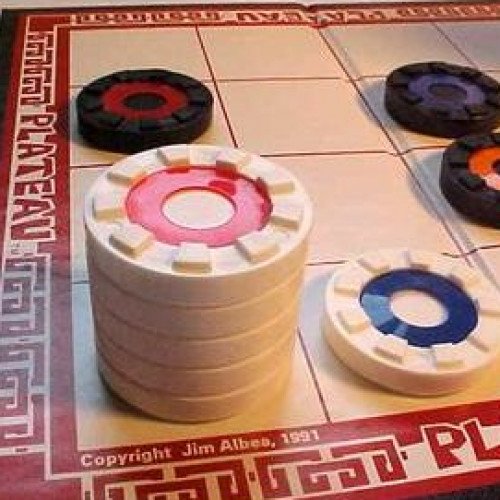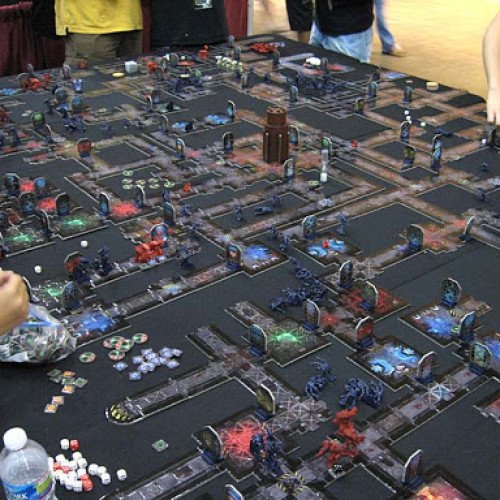PLATEAU VS SPACE HULK

PLATEAU
Plateau is a two-player abstract strategy board game invented by Jim Albea. The game was developed over a two-year period culminating in its present form on May 12, 1986. The original name for the game was Pinnacle, but it was discovered that an older board/card game had that name, so around 1989 the name was changed to Plateau. From the 1980s through the 1990s Plateau was played at Science Fiction conventions mostly in the Southeastern United States. From the 1990s to the present, the game is played live at an online game site and via email. In 1997 a computer implementation of the game was created which facilitates email play and has a computer robot. Onboarding is adding one new piece to the play. This new piece can be placed anywhere that doesn't directly harm an opposing piece. For instance, you can onboard to any blank square or on top of any of your own pieces. The majority of Plateau moves are onboards. Instead of Onboarding or Moving, a player can choose to spend his turn exchanging prisoners. Prisoners are exchanged using the point values of the pieces. A simple value-for-value system is used. Since the pieces range in value from 1 point (for the mute) to 21 points (for the Ace) there are usually several combinations and options available for the players. The player initiating the exchange selects the pieces he wishes to exchange. These pieces will all add up to some point value. The responding player then has four options depending on the point values of the prisoners that he holds.
Statistics for this Xoptio

SPACE HULK
Space Hulk is a board game for two players by Games Workshop. It was released in 1989. The game is set in the fictional universe of Warhammer 40,000. In the game, a "space hulk" is a mass of ancient, derelict space ships, asteroids, and other assorted space debris. One player takes the role of Space Marine Terminators, superhuman elite soldiers who have been sent to investigate such a space hulk. The other player takes the role of Tyranid Genestealers, an aggressive alien species which have made their home aboard such masses. In Warhammer 40,000, the term "space hulk" is used to refer to any massive derelict space ship. Due to the shifting, immaterial nature of the Warp, an otherworldly realm through which space ships may travel between the stars far quicker than they would be able to through real space, some space hulks are jumbled and twisted agglomerations of multiple vessels lost to the Warp throughout centuries or millennia. Space hulks may house more than just Genestealers; other threats aboard can include human followers of the dark gods of Chaos, nightmarish Warp Daemons, and Orks who use space hulks as their "standard" method of interstellar travel. Genestealers were described in an entry of the "Aliens and monsters" section of the first edition of Warhammer 40,000 (the "WH40K - Rogue Trader" manual), but they were very different from their Space Hulk incarnation, which was more influenced by the xenomorphs depicted in the Alien franchise. Since the 1990s, subsequent games like Warhammer 40,000 and Epic have absorbed them as part of the overall Tyranid army where they serve as the shock troops, although their origins are not related to any other Tyranid broods. A force composed purely of Genestealers can still be fielded as a sub-type of the Tyranid army, in what is known as a Genestealer Cult. The Cult is described in the in-game background as an infiltration force that weakens a target planet, infecting the local population and causing civil unrest in advance of the arrival of the main Tyranid hive fleet.